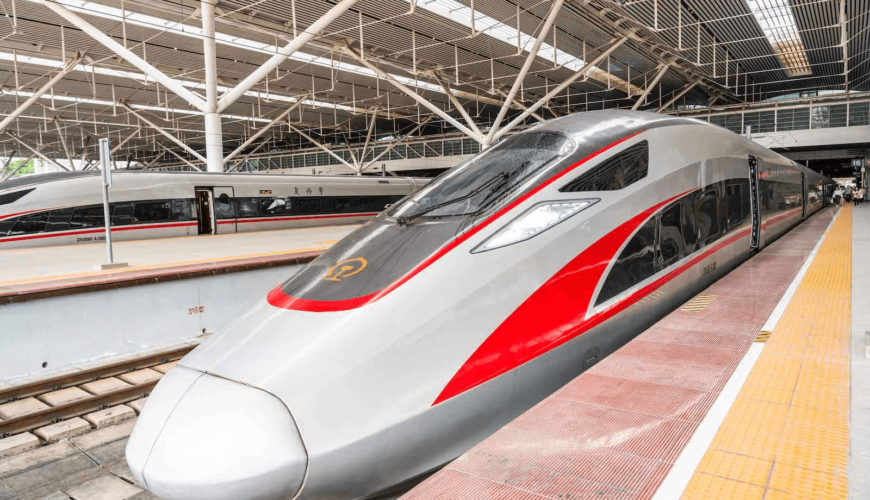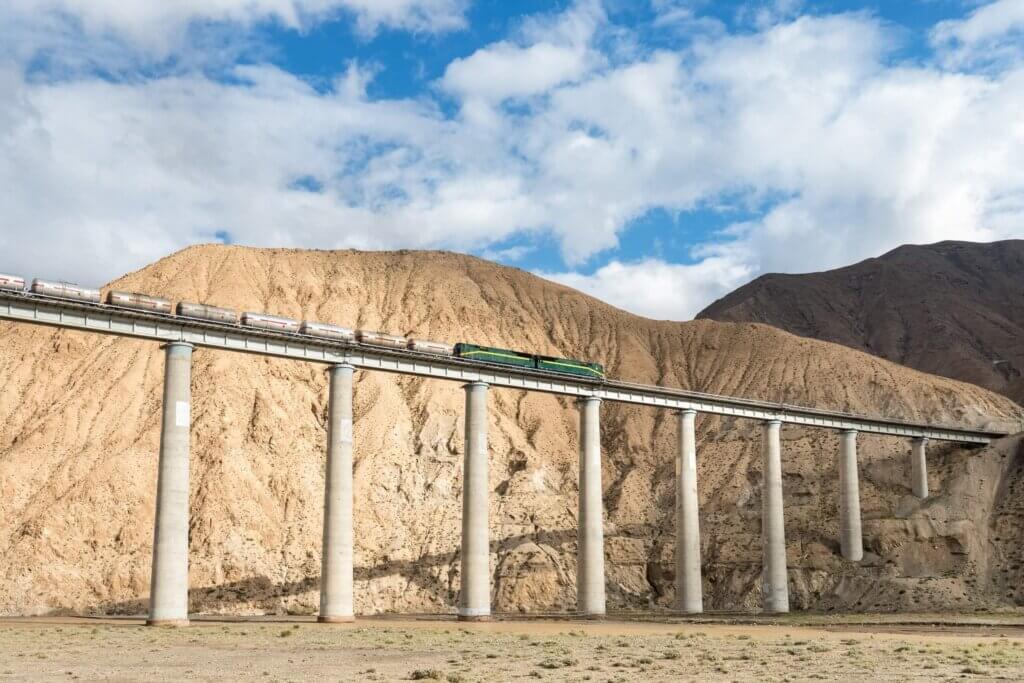
Find out which are the main Chinese railroads
For the most developed countries in the world, the railroad sector has a preponderant role, both in the transport of cargo and people. China, for example, is one of the countries that invests the most in this sector, making the Chinese railroads a reference for the rest of the world.
With each passing year, China increases its investments in this segment even more, increasing the mileage of the railroads and improving the technology used in the railroads and trains. To give you an idea, in 2019, 802.9 billion yuan were invested in railroads (about 600 billion reais).
The following year, the Chinese Ministry of Transport announced that roughly the same amount would be invested for 2020, further expanding recent investments made in Chinese railroads.
These high figures show how much China has invested in the sector, essentially over the last few years and decades, aiming to improve the Chinese railroads and trying to get closer to the United States, which is the country with the largest railroad fleet in the world..
Content Index
History of Chinese railroads

The history of Chinese railroads is centuries old. The first Chinese railroads were built by the English, just for demonstration, having little mileage and without much commercial use.
However, quickly began to be built effective railroads, the so-called "railroads" .
The first railroad built on this model was Woosung Road, which was about 14 km long, but operated only between 1876 and 1877. The line, built by the British government, ran between Shanghai and Woosung.
After abandoning the railroad system, discredited by the inactivity of the railroads and because of China's defeat in the Sino-Japanese War, China only allowed investment in railroads again in 1895, when the government released which countries had acquired concessions for new railroads.
The first of the Chinese railroads, built by the Chinese government, was the Beijing-Zhangjiakou railroad, developed in 1905 by Zhan Tianyou.
The inauguration of this historic railroad was 4 years later, in 1909. This is, to this day, one of the most important railroads in the country, operating with high-speed trains that reach up to 350 km/h.
After the construction of Beijing-Zhangjiakou, investment in railroads started to grow considerably. In 1911, for example, the country already had about 9,000 km of railroads, representing almost a third of the railroad mileage in Brazil in 2021, for example.
With the constant advancement of technology and the broad economic development of the Asian country, China currently has one of the largest railroad fleets in the world, occupying second place in the ranking of largest railroad networks with more than 140,000 km in length.
Of these 124,000 km of Chinese railroads, more than 30,000 km of tracks were built for high-speed trains, with technology in which China stands out in relation to other countries.
This number represents a reach of about 80% of Chinese municipalities with more than one million inhabitants.
High Speed Trains

As we highlighted, high-speed trains are constant investments in recent years in the Asian country. Aiming to increasingly improve the journey of Chinese railroads, the Chinese government invests heavily in the construction of the famous bullet trains, which can reach up to 350 km/h of speed.
The goal set by the country was to build, by the end of 2020, 30,000 km of railroads with high-speed trains. This number represents two thirds of the total number of high-speed railroads in the world, making China a power and reference when it comes to high-speed rail.
In addition to already having the best fleet of high-speed trains in the world, the Chinese railroads are still constantly improving and it is very possible that the railroads will be further improved in the coming years. In 2021, for example, the Chinese government announced the launch of the world's fastest train, which can reach 600 km/h.
In order to achieve this high speed, they differ from traditional bullet trains, which are driven by Chinese electric railroads. To reach 600 km/h, the new Chinese bullet train uses magnetic levitation technology, reducing the trains' contact with the tracks and giving the sensation that the train is really levitating.
These high-speed trains on Chinese railroads are currently responsible for transporting people and cargo across the entire length of the country. In 2019, for example, the Chinese government estimates that 3.54 billion passengers were transported in the country in bullet trains alone.
In relation to goods, the numbers are also expressive. That same year, 3.37 billion tons of goods were transported, of varying types, such as coal, oil, grain, among others.
Chinese railroads Expansion Projects

As discussed throughout the article, the Chinese railroads are already quite significant and China is one of the main countries when it comes to the railroad network. However, the country continues to improve its investments, aiming at the construction and assembly of new integration projects between cities and the construction of new high-speed trains..
The bullet train announced in 2021, which runs up to 600 km/h, is one of the examples of how China seeks to further expand its Chinese railroad projects.
Also, according to the railroad development program presented by China railroad, the country should connect all Chinese cities with populations over 500,000 by 2035. All this connection will be made with high-speed trains.
With this project, the idea is that the Chinese railroads will reach, by 2035, 200 thousand km in length, 70 thousand km of which with high-speed trains. The idea is also that all cities with populations above 200 thousand people are connected with railroads, regardless of whether they are with bullet trains or not.
Conclusion
As we have seen, Chinese railroads are quite significant, not only for China, but for the rest of the world, serving as a technological and capacity reference. There are more than 140 thousand km of railroads spread across the most populous nation in the world, with more than 30 thousand with high-speed trains. In the coming years, the country's idea is to keep improving the sector, with billionaire investments.
Searchs:
http://portuguese.xinhuanet.com/2019-01/03/c_137716594.htm
http://portuguese.people.com.cn/n3/2020/0103/c309806-9645866.html
http://portuguese.cri.cn/news/china/407/20200907/539327.html
https://pt.wikipedia.org/wiki/Lista_de_ferrovias_da_Rep%C3%BAblica_Popular_da_China












